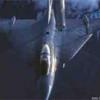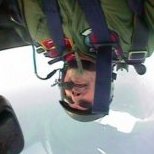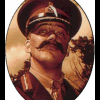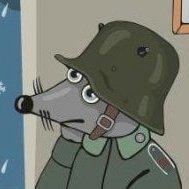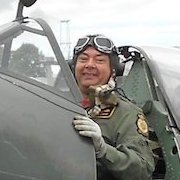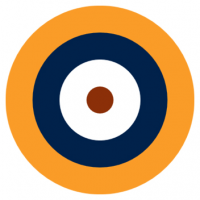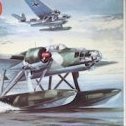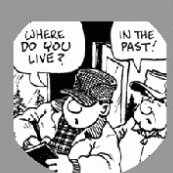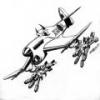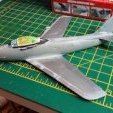Leaderboard
Popular Content
Showing content with the highest reputation on 30/11/18 in all areas
-
Hello! I made this bird couple of months ago, I couldn´t upload it before because im currently finishing nursing school, so i have a lot of stuff to read and study 😪 So, this is the heller kit, I heard it has some inacuraccies on the wing size and shape, but it depicts well a Mig-29. It was entirely painted with humbrol enamels and handbrush. Here are the photos: I was surprised that the instrument panel of the kit its actually "similar" to the real one (not random buttons everywhere) IMG_2275 by basco.br1, en Flickr tiny seats IMG_2277 by basco.br1, en Flickr IMG_2553 by basco.br1, en Flickr IMG_2554 by basco.br1, en Flickr IMG_2555 by basco.br1, en Flickr IMG_2556 by basco.br1, en Flickr IMG_2557 by basco.br1, en Flickr IMG_2558 by basco.br1, en Flickr IMG_2559 by basco.br1, en Flickr IMG_2560 by basco.br1, en Flickr IMG_2561 by basco.br1, en Flickr IMG_2562 by basco.br1, en Flickr IMG_2564 by basco.br1, en Flickr IMG_2565 by basco.br1, en Flickr IMG_2566 by basco.br1, en Flickr Hope you like it!! Gretings from Chile Bruno20 points
-
Hi all, Latest off the production line is a Tamiya 1/48 Beaufighter TF Mk.X finished in the markings of 31 Sqn RAAF engaged in operations over New Guinea and the Netherlands East Indies against the Japanese during 1944. I have used the excellent Tamiya kit and equally good decals by DK Decals with paints by Gunze and Aeromaster, the kit is an absolute pleasure to build with no problems at all and the only alteration I made to the kit was to move the aileron actuators on the tail planes from the upper surfaces to the lower surfaces. So without further waffling here are the pictures of the finished item; Thanks for looking in and for those interested here is the WIP; I strongly recommend popping along to the Pacific At War GB which I have built this as part of as there are some truly excellent builds on it, and it's not too late to join in either!! As usual all comments and criticisms are gratefully received. Craig.17 points
-
Grimy Tomcat. The model which brought me a lot of distinctions at modeling festivals. F-14D Super Tomcat Trumpeter 1:32 The model made without additions, the whole work was directed to the effect of painting. I used a lot of different painting techniques to finish The Trumpeter model is probably familiar to you, it has a lot of mistakess, but with my approach (building straight from the box), more important is to fold the elements. In this case, there are no major problems.13 points
-
Here are some photos of my recently completed Spitfire Mk II.a. of 315 Squadron, August 1941. Its based on the Airfix Mk.I. 1:48 kit, with a small scratch built Coffman starter. - Interior was Eduard pre-painted PE - I found the steel seatbelts much easier to work with than the brass as they seemed to be less springy. - Paints were a mixture of Vallejo and Tamiya, with Mig lucky gloss varnish and then Vallejo matt varnish. - Decals from the Polish Spitfires ModelMaker.pl sheet - Weathered with various MiG pigments and washes. - Radio and IFF antennae were Uschi van der Rosten fine rigging line. To fix the well known fragile undercarriage joint I scratch built a m/f joint using short lengths of brass (0.6mm dia) and associated locating holes which seemed to work quite well.12 points
-
This has been trundling along for a while, this build. But a burst of energy (oddly enough as I was off work sick) has seen it over the line. The FM-2 Wildcat needs no introduction, and if it does then there are plenty of better written potted histories than I could manage. Suffice to say it was the last of the Wildcat line, with a more powerful engine and a larger tail to compensate. The Sweet kit is also well known. The only edits I made to it were to put a spare seat in the cockpit (can't be seen); to widen the diameter of the cowling (as the Shelf Oddity instructions wisely advise); and to put the prop in my dremel to lathe down the somewhat exaggerated staggered hub into a spinner. I was very tempted to use the lovely Shelf Oddity etch set for this (https://shelfoddity.com/index.php?route=product/product&product_id=58 quite challenging-looking but I think I'd be up to it). In the end, though, I've decided to save that or another 'cat... I did use the superb (https://shelfoddity.com/index.php?route=product/product&product_id=25) Shelf Oddity decals. These were an absolute joy to use, even considering all the many many little stencils I had to put on. Not a whisper of silvering and all perfectly well behaved. There is a small etch fret as well, so you can put rocket stubs and other little details on. I plan to do the blue and natural metal ones the decals provide for, so will use the full detail set and the subject-specific etch on a future build. The Naval Air Modification Centre (NAMU) trained mechanics and had a number of bright yellow aircraft assigned to it (including a rather fetching Helldiver). Here's my Wildcat parked up in September 1946... As well as being used to test things like HVAR rocket, they were used as trainers and tugs... I sprayed the whole thing in Mr Hobby 329 which worked well, but required quite a few layers to get the right depth and shade. I used oils, pencils and pastels to weather (I refuse to believe that a bright yellow radial remains clean for long). I was particularly smug about my little pitot which I scratch built... The aerials at the back caused me some grief, but I got there in the end (kept reminding myself that it was better than trying to rig a Gladiator...) And that's that. With something totally unrelated but also on the bench... And now this goes to join its sibling Wildcats... Thanks very much for looking!12 points
-
Hi folks, with my growing collection of IAF I thought it would be nice having some of their opponents in the display case too, so I opted for this Eduard kit (this is my second kit, so I knew what to expect). It comes with the Royal Class boxing, basically with all goodies you may need. I only replaced the stencils data for the GHW ones which are just fabulous. The markings is one of the machines flown during the Yom Kippur war and later allegedly wore some kill marks on the nose (including one for an Iranian F-4). However, I did not find that in my references so I omitted it for the time being. Now on to the Mirage:-) Cheers Libor10 points
-
#30/2018 Here´s my dad´s newest completion. Dragon kit with AIMS decals, sadly they don´t include the correct (without black outline) Balkenkreuz for the fuselage and upper wings, took them from an Owl Decals sheet. Gunze RLM70/71 for the splinter camo, MRP RLM76 (in my dad´s opinion too dark and blue-ish) as RLM65 on the underside and a brightened version of MRP RLM76 for the field applied camo on the upperside. Added brake lines with plastic rods and lead wire, antenna with EZ Line. My dad used bluetac/Uhu patafix for masking the field camo. The edges got too sharp so he oversprayed them freehand but you can still see the sharp edges look through and it caused some spatter. When you don´t really go close up you won´t see it, so, in the vitrine the model looks still good. To oppose the multi-engined allied submarine hunters over the Bay of Biscay between the northcoast of Spain and France, KG40 built up a Gruppe equipped with different types of Ju88C Destroyers. Most aircraft received a field applied additional camo and each looked different. The model shows the aircraft of Oberleutnant Kurt Necesany, 14./KG40, 1942-43 Bordeaux/France. He was KIA on 14th Feb 1944 at the age of 23. While attacking a USN PB4Y-1 his aircraft was damaged by defensive fire. Necesany and his crew didn´t make it back. Despite search attempts, no trace was found of them. Build thread here https://www.britmodeller.com/forums/index.php?/topic/235043706-bloody-biscay148-junkers-ju88c-6-kg40/ DSC_0001 by Reinhard Spreitzhofer, auf Flickr DSC_0002 by Reinhard Spreitzhofer, auf Flickr DSC_0003 by Reinhard Spreitzhofer, auf Flickr DSC_0004 by Reinhard Spreitzhofer, auf Flickr DSC_0005 by Reinhard Spreitzhofer, auf Flickr DSC_0006 by Reinhard Spreitzhofer, auf Flickr DSC_0007 by Reinhard Spreitzhofer, auf Flickr DSC_0008 by Reinhard Spreitzhofer, auf Flickr DSC_0009 by Reinhard Spreitzhofer, auf Flickr DSC_0010 by Reinhard Spreitzhofer, auf Flickr DSC_0011 by Reinhard Spreitzhofer, auf Flickr DSC_0012 by Reinhard Spreitzhofer, auf Flickr DSC_0013 by Reinhard Spreitzhofer, auf Flickr DSC_0014 by Reinhard Spreitzhofer, auf Flickr DSC_0015 by Reinhard Spreitzhofer, auf Flickr DSC_0016 by Reinhard Spreitzhofer, auf Flickr DSC_0017 by Reinhard Spreitzhofer, auf Flickr DSC_0018 by Reinhard Spreitzhofer, auf Flickr10 points
-
CAMERA PIT PART 2 Hi guys I have now managed to complete the camera pit after rather a difficult week or so trying to find information about the equipment that is found in the pit. I do hope that I have done the area justice and hope that it is realistic enough! Its rather a large post so lets get on with it!.😉... To start with I made the main Junction box and wired it all up.....here's a photo..... Here it is all painted..... I then had to make the Intervallmeter power box which is connected to the camera which allows photos to be taken at intervals for photos of bomb blasts on the target ......this was a fiddly affair being so small but got there in the end!..... ...and painted..... This insect posed for me whilst taking the shot!! Here we have a couple of Supercharger control Amplifiers!....who knows what they do!...amplifies the super charger?..ha ha..haven't a clue! Here they are installed at the back of the camera pit...... The Camera support frame was then built using plastic and wire...... Here is my attempt at scratching the Fairchild K17 camera which was largely used on the B17s...... ...and so you can get the scale of it........ Now comes the unsure of what's what section!! On the floor of the camera pit there is a viewfinder aperture....as far as I can make out ,the operator would attach a view finder onto the aperture which was long enough for the operator to just bend forward and look through it whilst sitting in the chair. This is what I think it looks like from some dodgy photos......... So then....here are a few photos of the now complete camera pit....... I will leave the camera pit door open so that all this work can be seen. So that's another section complete and it's now onto the radio room itself starting with the lower section....lots of radios to be built! As usual thanks a lot for your interest in this build especially to the guys who have followed this for over the past 4-5 years...you will deserve a medal...along side me!! Cheers for looking in and all the best! Fozzy10 points
-
Thanks Bill Not much to do assembling the wings to be honest John It is! Thanks RAY Not only are the kit intakes off, but the little intake isn't good enough is it? Nasty. Out with some tools and burr it out: You'll see it bigger, later, when it's tidier. Probably. The OHP film arrived this morning. 100 sheets of premium acetate. The plan is to print out the scaled image of the intakes as a template, like this: That's not edited - it's a picture of, er, the picture held under the kit. By the way, the kit has a vent between the engines underneath and the photo (MR2) doesn't - does that need to come off? Can you see NOW what Jamie meant about the trunking and how the view fools us into thinking the intakes are squarer? Try to look at just the 'rim'. Not too bad eh? Oh, and the camera lens causes a problem too - wide v telephoto etc. Can you also see how perspective is so important? I can NOW, which means the film is useless as a template 'cos I can't lay it over the holes to check the shape. Doh! Oh well, I now have 100 sheets of acetate. Bit thin but hey, less than £10. I shall have to do this by eye then. Bad news. My 'eye' is useless.10 points
-
Will you be displaying the Merlin on a stand like this one Bill ?10 points
-
Hello, this is from 3 years back, very nice kit, classic Hasegawa quality. Used the Eduard photoetched set, Vector resin engines, Fine Molds and Mini World MGs, plus some minor scratchbuilding. Colours are all Gunze acrylics and some alclad for the metalics. All insignia is painted on, except for small Japanese print on the aft fuselage. Not the best of efforts, but I think worth looking. Hope you like it. Cheers Alex9 points
-
I think it will be a very unusual model. Not often seen on Britmodeller. MiL-4 in Polish colors Trumpeter model 1:35 The whells visible in the pictures come from the kit and aren't of good quality, I exchanged them for resin wheels, however, I did the pictures earlier.8 points
-
Thanks Massimo, the car is certainly a lot of fun! Cheers Ced, a little more work required, but it's getting there! Thanks Stuart, as above, there's still a bit more to do to get it right. Many thanks! Keeping on as requested! Cheers Hendie, I've had a couple of beers tonight so I'm not even going to try to say that...... Another small update. One of the last things I needed to do after my relocation was to set up my spray booth. I finally got around to that today by cutting up one of the cardboard boxes I had kept, and that meant I could finish off the interior work. The radiator cooling flap was removed with a scalpel as it will be displayed open, then I hand painted the pilot's cockpit where I had made small corrections. I stuffed a piece of sponge in the gunner's cockpit and sprayed that, plus the gun cone, the rear portion of the wing undersides where the fairings will be, and the insides of the wheel fairings and radiator shroud. Almost as an afterthought, I decided to add some PPP to the edges of the centre section to remove what would be a rather large gap between the canopy and the fuselage. The kit canopy is considerably thicker than the one I'll be using so I wanted to reduce the gap and give a little more of a positive location for the canopy sides. That should tidy up easily enough and make sure that everything flows together a little better without any large gaps. When that is dried and sanded down I'll give it a coat of Dark earth, then I can start to look at getting the canopy supports and ADF aerial done. Nothing will be done tomorrow as I'm heading to Dubai for the Dubai 7s rugby tournament with a friend. happy modelling! Ian I've just noticed that there's a bit of a seam that needs to be taken care of between the cockpits too.8 points
-
Thanks Roger and Giorgio Spurred on by my success with the intake trunking I decided to go ahead and fit the wheel bays: I made sure they fitted first without the problem of them appearing in the bottom; I think this may have been caused on other builds by squeezing the wings? Fine for me though. With that dry I went on and Touch-N-Flow'd the wings: … without the need for too many clamps: Make sure you get rid of all the sprue join bits - they go into the inside of the wing and will stop a nice seam.8 points
-
With apologies to everyone in the other two GBs I'm currently involved in (KUTA and Grumman), this is the one I've really been looking forward to since the Airfix GB finished. I think it's because the three builds I've been contemplating - a Neptune MR.1, SAAF Turbo Dakota, and this - are all exactly the models I want to be building right now. So I'm starting with this one and may well get onto one of the other two before this GB ends. In any case, my plan is to do all three within the next 12 months, since they all fit multiple GBs in the next year. Which one to start with was a bit of a dilemma for a while, until I realised that the Tu-22KD fits the bill. I've been wanting to build this kit since I bought it, but also been procrastinating over it, and this GB is the kick I needed. So it's the Tu-22 first. It's not the most obvious maritime patrol aircraft to choose. But the Tu-22KD's main role was anti-shipping warfare - in WWIII its role would have been to attack carrier groups with the Kh-22 (aka AS-4 Kitchen) missile, with either a conventional or nuclear warhead (it occurs to me this could have been a good fit for the proposed armageddon GB) and in the cold war they apparently regularly practiced targeting carrier groups in the North Sea. It also ticks a lot of my boxes - a big, idiosyncratic Soviet design, and also one of those kind of cold war designs that seems to represent a transition between the early jets and modern aviation. Here's the kit, from Modelsvit in 1/72: It's pretty typical of a modern A Model/Modelsvit kit - quite nicely detailed, some nice surface detail in particular, and most definitely short run (e.g. no locating pins and a fuselage which comes broken down into more pieces than the likes of Airfix would have. But the likes of Airfix would never give us one of these). According to the box top there are 320 parts for the aircraft and 28 for the Kh-22, which I think comes with a trolley to display it separately but mine will be semi-recessed under the fuselage (a bit like a Soviet Blue Steel). And here's the aftermarket stuff I'm going to use - Barracudacast wheels and afterburners, Amigo resin intakes, decals from Authentic Decals (sadly the most interesting markings are for other versions though), and New Ware masks: Can't wait to get into it - roll on tomorrow!7 points
-
Hi Folk's,my entry will be Revell's re-box of Academy's Catalina.The last time I built this aircraft must have been Airfix's kit way back when I was a kid Lord know's what a hash I must have made of that! There are two scheme's in the box an Alaskan based aircraft from 1943 and the box top post war Naval reserve scheme which I;m leaning toward's unless some Coastal Command decal's come my way! Now this will be a post Christmas build as I'm about to start a 1/48 Intruder for the Grumman GB.7 points
-
Hi, everybody! It's my next model. This is a perfect kit, I have nothing more to say.7 points
-
that's why I mentioned these..... oops, not those ones.... these ones.... formed around the inside of the intakes, and blended with the forward edge - THEN begin working on the inside shape7 points
-
I'm still trying to get a grey that suits the airframe in miniature Rich, medium sea grey just sits too darkling on a tiny model However you can stop that immediately I no longer hanker to build ships, that kind of malarky can wait til I'm shipwrecked on a desert island whose girls all emigrated before I landed ( if they'd been there when I did they would, of course, have stayed around to help me grow old disgracefully) 😎7 points
-
This kit is from Rewell. The ship is a sailboat sailboat and discoverer Vasco de Gama, who traveled on it - found a way to India. I built it in my usual ways, I used Tamiya acrylic primers, then I applied the Umton oils. The sails are made of 100% cotton fabric. Every one of my model colleagues will always create a tattoo print. Accessories, pulleys, barrels, cannons are from Radekship, for me it is the best deal in the field of boat modeling. How do you like it ?6 points
-
Hi Pals, I finally end the model, because I have not had much time to dedicate myself to the hobby. This kit, I have not been very happy to work, maybe someone with more skill than I do not think the same, I think it is quite difficult for average modelers, not for anything in particular, just because IMHO is not very well designed, what which causes "unnecessary" assembly problems, but anyway if it has been a good subject to test techniques. I would have loved to have done Zimmerit, but with how difficult it has been for me, along with the PEs, I've been overcome, after all it's about enjoying ... lol, maybe later. I'm not totally satisfied with the color of the model, but I have not managed to find the color combination I was looking for. Mostly because with the weathering it has become darker than I would have liked, and it is an issue that I have to improve ... weathering is a process that "always" will overshadow the final aspect of the model ... I think that for the next model (also of the same series), I will be more prepared to face the problems that arise, and obtain an optimal result. As always, thanks for watching and commenting Link to WIP section.6 points
-
The 4th Tac Fighter Wing team out of Seymour-Johnson AFB at the Gunsmoke Aerial Gunnery Competition, Nellis AFB, October 1983 71-0243 73-1166 73-1166 73-1196 74-1625 Thanks for looking, Sven6 points
-
We-e-e-ell I think this'll do Approximately 1.3mm tall on the model That's enough sticker stuff now, for now How's this for a fit? ? No I just dont like it I will have too make a card template that gives me a slightly narrower gap between the wingtips More tomorrow I do like how it looks though, tidy see (The nail buffer, it isn't staying there OK...) Ciao, for now Now where did I leave that pub? .........6 points
-
Hello, this is a model from two years ago. A nice little kit, no extras needed has its own photo-etched and resin parts. Opened the bomb bay and crew entrance door. Scratch built the interior, all guns, wheel bay and engine details. Any comments are most welcome. Thank you, hope you like it!6 points
-
With a nod to TheBaron... I flew back today from the dark realm known as LaLa land, on the Left Coast, and in my newly re-energized state had some time this evening to work on my Tri-motor. First up, before I glue the canopy in place I felt it wise to get the nose finished. For this, I gave the seam forward of the canopy a good coat of Mr Surfacer 500: The bottom of the nose needs more serious attention to fill in a step at the belly pan join. Here, I applied a generous layer of Bondo: The wing is the next major assembly to be tackled. The wing consists of five pieces, three for the upper surface and two for the lower. I thought the best course of action would be to assemble the upper pieces first -- this allowed me to firmly clamp the sections together and minimize any gap at the join between the center and outer wing pieces. To facilitate clamping, the tabs on the outer wing pieces first needed to be cut back: With the tabs cut back, I was able to get clamps all along the join, as can be seen below: Those little blue clamps, by the way, are surprisingly strong! If I recall correctly, I purchased them from MikroMark. While the wings were drying, I decided to see if I could do something about the wing's overly thick trailing edge. Here's what I'm talking about (using the wing from my spare Airfix kit to illustrate): The wings on the actual Tri-motor have much sharper trailing edges: So, using the wing from my spare Airfix kit as my guinea pig, I set about grinding and sanding the trailing edge to see if I could get something more acceptable. The pic below is of the upper wing center section. The left side shows the trailing edge after sanding, on the right is the unaltered trailing edge. This looks promising! Here's the entire left wing after thinning... maybe not as nice as the actual aircraft... But definitely an improvement over the original kit wing: I'm calling this experiment a success, so as soon as the glue on my build's wings is completely set, I will begin the grinding & sanding process all over again. Cross your fingers, and wish me luck!6 points
-
I did get Tony's stencil info, fabulous stuff Seriously considering leaving the wings off whilst I hunt some suitable messages on old Modeldecals sheets But the finishing line is surely not far off Wheels and legs are on and the last of the markings are on too The serials have been the worst part of it but it's time for a test You work out the test OK? Feels as if I have been on this as long as the Buccs and Palouste but soon be there Yep, the refuelling probe is a tad thin to my eye but now (according to Garp this was going to be reasonably OOB wasnt it) I am leaving it how Rovex wanted it after it gets a coat of blacking Coming soon on a web address near here With its big gray friend the CH-53 and of course in accompaniment to the Off now to figure out the best way to hold the wings close but not touching and how to wangle the Jury struts into place between fuselage and wing upper surface6 points
-
#31/2018 And a second finished model for today. Used a Hasegawa A-9 kit, besides kit markings the aircraft number and the Werknummer came from Kagero Topcolors 13 "Operation Bodenplatte". Gunze RLM paints, Ultracast resin seat, EZ Line for the antenna, spinner spirale is painted. The model shows the aircraft of Unteroffizier Alfred Fritzsche, 4./JG1. He was downed on Jan 1st 1945 during Op Bodenplatte near Ghent. After a belly landing he crashed into a house, was severly wounded and became a POW. Build thread here https://www.britmodeller.com/forums/index.php?/topic/235045165-bodenplatte148-focke-wulf-fw190a-8-jg1/ DSC_0001 by Reinhard Spreitzhofer, auf Flickr DSC_0002 by Reinhard Spreitzhofer, auf Flickr DSC_0003 by Reinhard Spreitzhofer, auf Flickr DSC_0004 by Reinhard Spreitzhofer, auf Flickr DSC_0005 by Reinhard Spreitzhofer, auf Flickr DSC_0006 by Reinhard Spreitzhofer, auf Flickr DSC_0007 by Reinhard Spreitzhofer, auf Flickr DSC_0008 by Reinhard Spreitzhofer, auf Flickr DSC_0009 by Reinhard Spreitzhofer, auf Flickr DSC_0010 by Reinhard Spreitzhofer, auf Flickr DSC_0011 by Reinhard Spreitzhofer, auf Flickr DSC_0012 by Reinhard Spreitzhofer, auf Flickr DSC_0013 by Reinhard Spreitzhofer, auf Flickr DSC_0014 by Reinhard Spreitzhofer, auf Flickr DSC_0015 by Reinhard Spreitzhofer, auf Flickr DSC_0016 by Reinhard Spreitzhofer, auf Flickr DSC_0017 by Reinhard Spreitzhofer, auf Flickr5 points
-
Hi everyone! I finished the EMHAR Whippet kit. It was painted with Gunze and weathered with oils and pigments. Everything out-of-the-box except for string wrapped around the mufflers. Hope you like it! Marco5 points
-
Hi all, hope you don't mind me posting yet another Wimpy. This one was finished using the kit decals for R-Robert, the aircraft flown by the incredibly courageous sergeant pilot James Allen Ward whose exploits earned him a well deserved VC. Unfortunately, these decals weren't available at the time I received the original test shot from Airfix but fortunately, that allowed me to model one of the 311 Czech sqn aircraft instead. It's a fantastic kit and worthy of several builds which is just as well as we can't have too many of 'em adorning our Bomber Command SIG table. This kit was provided by Simon (Owen) of Airfix to be built for display on the Airfix stand at the recent Telford show a few weeks ago. It seemed to go down well which is gratifying as hopefully, decent sales of the model will prompt them to produce more BC related subjects...Manchester, Hampden or Lincoln anyone? The model was first black-based using Mr.Surfacer 1500 Black primer thinned with Mr.Levelling Thinner (1/3 ratio), then marbled and painted using MRP's excellent lacquer acrylics, fired through a Mr.Hobby PS-770 to get the finer details. All weathering was applied using Abteilung502 oils, AMMO MIGs pigments and a few AK washes for oil, grime and fuel stains. The aerial wires were added courtesy of Uschi Van der Rosten's 'fine' rigging line, (actually hard to see in many of the photos!) All in all a lot of fun and a nice reprieve from bending and smashing vac and resin parts into shape...but more of that later Thanks for looking and cheers Melchie VC (Violent Conduct) A couple of images of the two Wimpys together...hopefully, there will be more variants in the future.5 points
-
And we're done! I have to say that I have been thoroughly impressed with this kit from start to finish, with kits of this standard I can clearly see where Tamiya gets in name for quality from. It may not be a s detailed in some places as Revell's new kit seems to be but to my mind none of it will be visible with the fuselages closed up anyway and it certainly looks like a Beaufighter to me and captures the rugged look of the original very well, and everything fits!! Enough waffling, here are some pics of the finished model, i will post some more in the gallery soon; And that's it, it only remains for me to thank our host Rich for organising another great GB which I have thoroughly enjoyed being a part of and am really enjoying watching the excellent builds of other members on. A big thank you to all of you who have popped in to have a look and either "liked" or left comments or advice, it is always welcome and to my mind is what makes taking part in a GB so much fun and makes us all feel involved in whichever project we have decided to follow the progress of. Craig.5 points
-
Hold that elevator... I’ve been working on this a couple of days because I think this is one of the most fascinating “little-known” examples of the B-17’s brilliant design. I’ll get to that in a moment. I started by gluing the horizontal stabilizer pieces together to make sure everything would be aligned. Then I used the rotary saw to separate the stabilizer and rudder for each side. Some styrene sheet was cut to cover the blank areas where the cut was made. Then I drilled two small holes (above) where the elevator would be hinged to the stabilizer. It was easy enough to then use an Xacto knife to cut the hole into a notch (below) and square it off. It may be hard to see but I added a very thin strip of Evergreen styrene to the top of the area to create a fine lip. (look for the silver edge) Then two bits of stryrene sheet scrap were added under the lip at points that match the notches in the elevator. The whole purpose of this exercise was to droop the elevators just enough to see the inside of the tip of the stabilizer (at the far side of the photo below) This is where you’ll find evidence of the brilliant design I mentioned before. Boeing designed the stabilizers such that there is no “left” or “right” versions. On the assembly line, there is only one stream of identical stabilizers headed to the airframes. That way the workers could just grab the next two parts for each plane – flip one this way and it is for the “left” side … flip the other one that way and it is for the “right” side. That way there’d never be delays if one group worked faster than another. You can see this on planes that still have their manufacturer plates on the inside of the stabilizer tips like B-17G 44-85829 Yankee Lady The data plate on the right stabilizer is right side up… The plate on the left side is upside down. The sheer brilliance of using a symmetrical airfoil. - Now the big question is how to represent those date plates as up and down at such a small size. I'll figure it out. Another example... B-17G 44-85778 Miss Angela (Palm Springs Air Museum) had her data plate on the right side (painted over) and the one on the left was removed -- probably someone on the restoration team thought it was a mistake (OOOOPS!) - It would be interesting to know how many of the B-17s out there still have their data plates intact... sadly I don't see others in my photos. ------ I have also heard (but have not verified) that the outer wing sections also had the same symmetry design so that each was interchangeable right up until the workers installed fuel cells… that is why the vents, lights and everything else is contained on the inner wing section. I keep looking at the outer sections to decide if that would be possible, but I just don’t know. Later Forts had the Tokyo tanks which had a pair of vents in the tips – but that was the very tip and may have been added once the “side” of the outer wing was determined. Is it OK to say I'm still "up in the air" about this?5 points
-
Hallo everybody, I started a new project, Eurofighter Typhoon with a lovely tail art. I used Revell's Tiger Day version, decals from ModelMaker and PE set from Eduard. So far I find the kit not as precise in fitting like many modern kits. Well, I don't know better kit in this scale anyway and Tiger was a bargain! K.4 points
-
Not a lot to show here, simply an old Shelf of Doom model finally completed, just to sort of "show the flag". Here is how it looked before I started back on it a couple of months ago: (It's at the top right). Pretty much the fuse and interior were all assembled, and all the primer and coats of Alclad were done. Just needed t add all the final bits and a little other painting. Since I never intended to post this was, I didn't take any pics along the way, but it's just your usual resin kit. Can't remember what I did for the cockpit -- may have used a modified F-84G. Everything else is stock kit, except for the pitot tubes are tiny tubing and wire, and the use of some landing gear doors from either an F or RF-84 kit. The supplied kit decals for the wing stars and bars are too small compared to the photos I used, and the kit supplied buzz number was printed in black. I scanned those into the computer and changed the color to Insignia Blue in Photoshop, and then reprinted two sets onto clear decal paper, using my Epson inkjet printer. The two sets of decals were kind of semi-transparent, so I installed the second set atop the first set, after the fist set had dried thoroughly. Sorry for no more photos, but I am glad to finally have her join the collection. Ed4 points
-
Hi folks, Those of you who followed my build thread on this will know that it was built from the AZ Models 1/72 kit of the two seat Spitfire, and it was painted up and had custom decals and masks made to replicate NH341, otherwise known as Elizabeth. It will shortly be in the hands of the owner of the real thing, but I thought I'd take advantage of a sunny half hour this morning to photograph it before it goes... Cheers, Dean4 points
-
Hallo everyone, This is actually my second WWI build. The tank is tiny, I fall in love with this cute little thing in Paris. Kit is excellent and a joy to build!4 points
-
Just finished today. This is the 1/144 scale Hurricane Mk I by Sweet. Finished as YB-J of 17 Squadron during the summer of 1940. The cockpit was dressed up a fair bit and a new canopy was made. I also whittled down the propeller blades and moved the elevators. These aircraft by Sweet are great little kits and come two in a box. If you ever get the chance, I definitely urge you to have a go!4 points
-
Come back Bill! You left the Avons running; I can hear them from here and they'll be out of fuel by chucking-out time....4 points
-
Final update before crimbo officially gets underway......... Got the bulk of stencils on (serial number excepted, will do that after masking the stripes next week) and made a start with the weathering by getting a quick panel line wash on, some oil streaks n discolouring along with some light chips, away for the weekend so this should have a chance to dry and then next week I can tackle those dreaded stripes! Enjoy your weekend!4 points
-
Hello everybody, I present to you my French P-39Q that was built as part of the recent P-39/P-63 GB. The model represents a French Airacobra based in Southern France early in 1945. Kit: Academy (re-issued by MPM) Decals: Berna Modifications: - 4-blade prop modified from a Quickboost P-51K propeller - guns (or blast tubes) replaced with real metal tubes (Abion Alloys) - frontwheel was scratch-built (the Academy kit includes only the earlier P-39 wheel) The Academy kit might have some shape-issues, but builds nicely and has beautiful surface details. The Berna decals are a bit on the thick side. This shows especially with the serial on the tail. I tried to create a weel-worn OD paintscheme (see the WIP for details). Instead of using a matt cote following the Future gloss, I sprayed the model with a very thin coat of faded OD (and NG on the lower surface). This also helped to blend in the decals. The silver drop tank adds some colour to the model. On the original photo the colour of the tank is hard to verify. But this type of 75 gal. drop tank was a standard USAAF item and I suppose that by 1945 they were all silver (or NMF?). The WIP might be found here: https://www.britmodeller.com/forums/index.php?/topic/235042717-172-p-39q-armee-de-lair/4 points
-
Hello colleagues modellers I would like to introduce to you my third F-14 from Tamiya 1/48. I built this model for Ted Rutherford who flew with him. Of the accessories, I only used Eduard's RBFs and seats. Fightertown Decals.4 points
-
I'll add my 1980 Airfix version, finished as the second prototype and done for the recent Airfix Group Build here.4 points
-
I knew Jimmy Kyle quite well and helped him find photos for later editions of his book and wrote the Foreword. The photos of Typhoons with the zig-zag marking all depict the same aircraft, as illustrated above; JP504 OV-Z, Sqn Ldr 'Jacko' Holmes' aircraft. It has appeared on a few decal sheets over the years, usually omitting the interesting markings, although I believe Eduard have got it right in a recent 1/48 boxing. The aircraft also featured a prominent white (or possibly yellow) 'Z' on the LE edge of each wing, between the cannons and the wing root. One of the photos in the book shows Holmes in front of the aircraft, with a clear view of the zig-zag on the black inner side of the main undercarriage leg. The photo also appears in 'Typhoon and Tempest Story' p.64. The purpose of the markings was to identify the CO's aircraft when forming up on the ground prior to take off. Other examples are known, primarily 182 Sqn, who used stripes or chequers to identify squadron or flight commanders' aircraft. The zig-zag actually follows a line of rivets on the inner skin of the doors; I believe it could have been tape to protect the rivets from corrosion. I have another photo taken in early 1944 which shows the zig-zag in similar fashion but without (apparently) a background colour. Incidentally, the inner side of the doors and the whole wheel bay were normally painted in 'Aluminium', not 'interior green'. It is quite difficult to interpret the markings on the inner (small) doors because of the low angle and brightness of the sun, but I think they were black with white tape(?) too. On the other hand, they could be Aluminium with just the tape added. CT4 points
-
This time the helicopter is very tired. CH-47A Chinook Trumpeter 1:35 The machine is heavily exploited with strong traces of weathering. I like this finish in my opinion that makes the model is not a plastic toy. Model without additives, made from the ground up to the end straight from the box. To start with, a few introductory photos: I think you now know that Chinook can be very tired4 points
-
Just don`t think of it as a "tropical" but instead as a "sand" filter and you wonder no more. All of our major WW2 MT operating airfields were unpaved and thus dusty, as Mike guessed. Taipalsaari airfield, where the HLeLv 34 moved in late June -44, was actually dried swamp and the surface was peat... the amount of dust it generated was enormous! Some fighter pilot memoires mention the need to use goggles in flight because when you rolled your aircraft all the sand and dust gathered on the cockpit floor became airborne and filled your eyes if you weren´t prepared for it. Here´s MT-221 kicking dust from Suulajärvi airfield 12 May 1944, she was a G-2 and actually our only true G-2/Trop! Photo (c) SA-Kuva. Another nice gadget is the Air Force Museum virtual panorama tool here: http://ilmavoimamuseo.fi/virtualmuseum/ Pyörremyrsky does indeed look elegant. Switch scales to one true and only, and you´ll have not one but three options: https://www.scalemates.com/search.php?fkSECTION[]=Kits&q=VMT+Pyörremyrsky* I´m not sure of their availability or quality, though! Best regards, V-P4 points
-
I've been plugging away at some painting on the body and a few other little tasks but don't have any pics to share quite yet (soon though). However, I was going through some shots from earlier this year and found a good reference photo of inside the nose section... Who am I kidding? I just wanted to throw this in here to make myself feel good! This was from a flight aboard B-17G 44-8543 Madras Maiden in April. I hope to have some update to the Ol' Scrapiron build very soon.4 points
-
Hi y'all! Still a pain to remove those mold lines... half of them are noticed once the paintjob starts... Soon the emperor is next! Ciao Iwik4 points
-
Thanks for the encouragement Martin. The recovery is going OK, but very carefully, and to be honest I haven't had much modelling time this week due to lots of other commitments. I'm treating the repair almost "panel by panel". I discovered that by using "normal" masking tape, I could remove all the decals from the damaged areas. A bit like the process used to wax legs! I wanted to do that as the repair will be Alclad, and the decals would show under a respray of that. The tape with decals removed: And the area now slightly cleaned up: The two main panels you can see left and right of centre are actually ok, so they don't need re-spray. They will be masked out for when I re-do the others. My next step will be to airbrush a coat of clear on all other surrounding areas (outside of the damaged ones), ready for when they get masked off to re-spray the affected ones. That way I wont accidentally pull off any good decals on the adjacent good areas - hope that makes sense! Feels like I'm restoring an antique, rather than one of my most recent creations! Terry4 points
-
Not much achieved this week due to major distractions around a house sale, which are mostly sorted now. There was also a small hiccup on the etch brass sets which come with the Coastal Craft Models 18 inch Torpedo sets, which I only discovered whilst I was making up more of these brackets........... I discovered that the two complete sets I had purchased had different etched brass: Set 1 above is a correct and complete etch set which makes up the brass for two complete Torpedo supports and shoulders, 8 supports per tube, two tubes. Set 2, the one I had been working from initially, actually has the lower row of twin holed brackets missing. They just don't exist on the fret. You can see the frets are actually different. A quick phone call to Coastal Craft Models and it turns out that the early etch examples (set 2 above) were wrong, and some may have been distributed in error, before the correct set with the full amount was re-produced (set 1 above). I was duly promised another (correct) etch fret in the post, and hey presto it actually arrived the next day. That is what I call service! Well done and many thanks to Coastal Craft Models. So now, after another session building Torpedo tube support brackets, we have eight completed, enough for two tubes. Eight more to go. And the good news is I have some spares now in case any are ruined in assembly (not unlikely!) I will make up all that I can which will be 20 now that I have some spares, and pick the best 16 for the model. Getting back to the model itself, I managed to close up the hull and here you see her with bridge (so far) temporarily in place. Still more to do mainly on the outside of the bridge, but she is starting to take shape: The join between hull and deck took much fiddling and clamping to get right and I wasn't happy in the end with the way the toe rail(?) and join itself co-habited so I have taken off all but the forward pair of moulded toe rail detail and and that has enabled me to properly putty some of the worst joins. It was just too fiddly to do that and preserve the toe rail. I have left the front rails for now as these were less prone to problems and they are curved, so would be harder to replace. I plan to replace all the others with square section micro strip. So this is where we are tonight: Looking at that last shot of the front remaining rail you can see the join which still needs making good. They may yet have to be replaced! More soon Terry4 points
-
I decided to build the fuselage and add the bombs later......less to mask and break when airbrushing the top coats. Therefore, I carefully inserted the rotating section for the turret, added the interior and tail plane strut and secured the fuselage halves together. Having struggled to get my Shackleton's fuselage together, I had done multiple dry fits with the Lancaster and shaved off bits of plastic until I got a nice fit......and hey presto it fits! It also seems tiny, but I'm guessing that is because the Shackleton is massive. Then I started joining pieces for the tail plane, which was nice and easy. Now to the wings, I am no expert at scratch building and having read the best way to alter the dihedral of the wings to make them truer to the real aircraft, I opted for a slight alteration that I felt comfortable with. So, I scored along the inside of the wings where the slight bend was visible and gently bent them some more. Then, gluing one section at a time, I ensured the angle was greater than the kit would have. I am fairly happy with the results, the wings have more of a dihedral than they did and give it a more authentic appearance. Now onto sanding the seams....my favourite job!4 points
-
Hiya Folks, As I said above, I started to paint the model last night and here it is,....... the first coat of Xtracolor enamel Light Slate Grey on the top of the lower wings has not dried yet,..... so I`m still on hold waiting for the 2nd coat,.which will hopefully look better and less wishy washy. I was going for the Battle of Britain era scheme with black painted extreme lower surfaces but I could not decide whether the sides/fin should be in Sky Grey or Sky,...... so have gone for a later 1941 scheme with Sky sides and undersides. I`ve used the last of my Polly Scale Sky on this model, plus Aeromaster Dark Slate Grey,..... I`ll deal with the fuselage later and for now have just covered the fuselage and canopy seams to check them out; Cheers, Tony4 points
This leaderboard is set to London/GMT+01:00



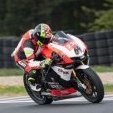



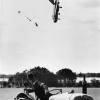


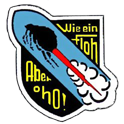
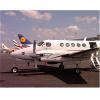
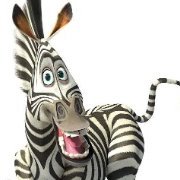



-1-1MINIATURA.thumb.jpg.bd7a7e672869500d45ee6e80478f6f25.jpg)
